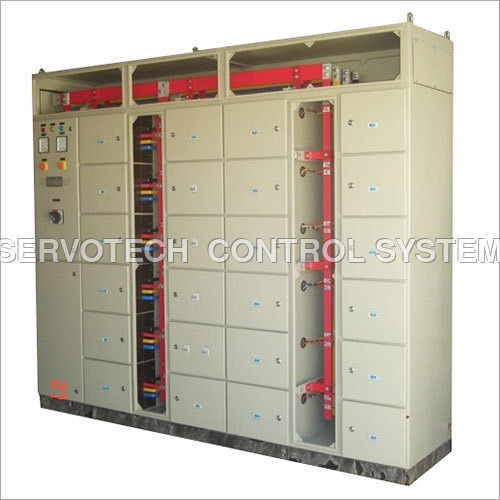
Welcome to our company

SOFT STARTER PANEL
MOQ : 1 Piece
SOFT STARTER PANEL Specification
- Base Material
- Other
- Material
- Other
SOFT STARTER PANEL Trade Information
- Minimum Order Quantity
- 1 Piece
- Main Domestic Market
- Gujarat, Madhya Pradesh, Maharashtra, Rajasthan
About SOFT STARTER PANEL
A soft starter panel is designed to control the starting and stopping of electric motors providing a gradual increase in voltage and current to the motor This reduces mechanical stress and electrical surges enhancing the motors lifespan and improving system performance Heres a technical description
Components
1 Soft Starter Unit
The core component that manages the voltage and current supplied to the motor during startup and shutdown
Typically uses thyristors or solidstate devices for controlling power
2 Control Circuit
Microprocessor or PLCbased control system that allows for adjustable settings eg rampup time current limit
Enables monitoring and diagnostics of motor performance
3 Bypass Contactors
Automatically engaged after the motor reaches full speed allowing for direct connection to the power supply and improving efficiency
4 Input and Output Terminals
Terminals for connecting power supply and motor leads usually equipped with fuses or circuit breakers for protection
5 Indicators and Displays
LED indicators for status running ready fault
Digital display for monitoring parameters like voltage current and temperature
6 Protection Features
Overload protection phase failure protection shortcircuit protection and thermal overload relays
7 Enclosure
A robust housing that provides protection from dust moisture and mechanical impacts
Operation
1 Starting Sequence
When the motor is started the soft starter gradually increases the voltage supplied to the motor according to the predefined rampup settings This allows the motor to reach its operating speed smoothly
2 Running Mode
Once the motor reaches its set speed the bypass contactors engage allowing the motor to operate directly on the power supply minimizing heat generation and energy loss
3 Stopping Sequence
The soft starter can also manage the stopping process applying a controlled deceleration rampdown to reduce mechanical stress and prevent sudden stops
Applications
Widely used in various industries for applications such as pumps fans compressors conveyors and other machinery where soft starting is beneficial
Standards
Designed to comply with relevant electrical and safety standards eg IEC NEMA UL to ensure safe and reliable operation
Advantages
Reduces mechanical wear and tear on motors and connected equipment
Minimizes electrical inrush current protecting upstream equipment
Enhances operational efficiency and reliability of motordriven systems
This description provides a comprehensive overview of soft starter panels and their significance in motor control applications If you have specific aspects you want to explore further let me know

Tell us about your requirement

Price:
Quantity
Select Unit
- 50
- 100
- 200
- 250
- 500
- 1000+
Additional detail
Mobile number
Email
More Products in Industrial Control Panels Category
PLC Logic Panels
Minimum Order Quantity : 1 , , Box
Surface Color : Other, Gray
Surface Finish : Powder Coated
Base Material : Mild Steel
Material : Other, Mild Steel, CRCA Sheet
Electrical Control Panel
Price 250000 INR / Unit
Minimum Order Quantity : 1 Unit
Surface Color : White
Surface Finish : Powder Coated
Base Material : Metal Base
Material : pper / Aluminum Busbar
Distribution panels
Price 30000 INR / Piece
Minimum Order Quantity : 1 Piece
Surface Color : White
Surface Finish : Powder Coated
Base Material : Mental
Material : Metal

 Send Inquiry
Send Inquiry





 English
English Spanish
Spanish French
French German
German Italian
Italian Chinese (Simplified)
Chinese (Simplified) Japanese
Japanese Korean
Korean Arabic
Arabic Portuguese
Portuguese